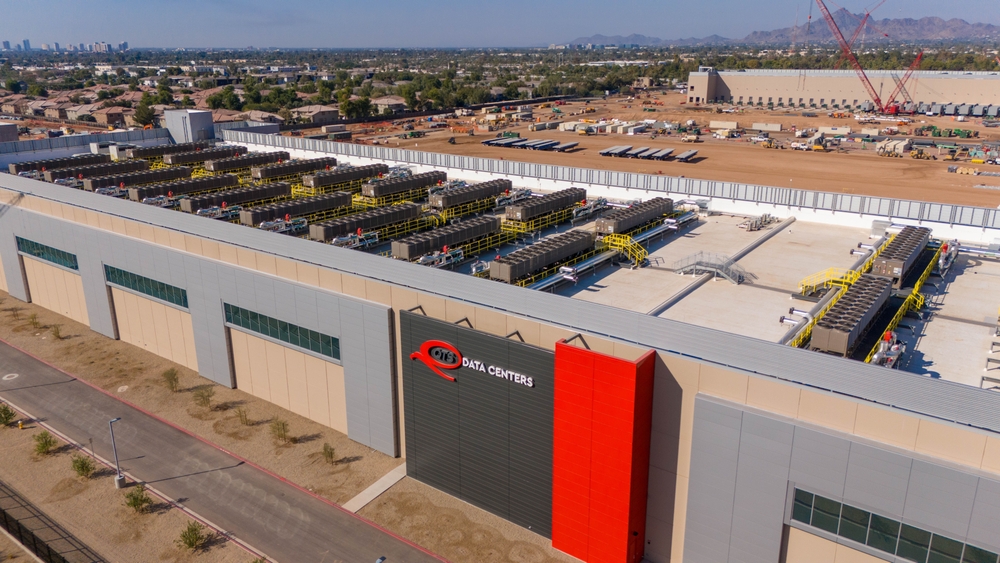Edge data centres’ global market to hit USD317 billion by 2026, and more news

For PropertyGuru’s real estate news roundup, the market for edge IT infrastructure and data centres is expected to reach USD317 billion globally by 2026. In other headlines, the Asia Pacific region’s heterogeneous economies mean many different interest rate scenarios prevail, with more dynamic and diverse opportunities. Lastly, Vietnam holds a national marine spatial planning for sustainable exploitation and use of marine and island resources, and to harmonise the country’s socio-economic development with national defence and security.
Global edge data centre market to hit USD300 billion by 2026
Real estate consulting firm JLL predicts a significant increase in data-dependent technologies like the Internet of Things (IoT) and generative artificial intelligence (AI) will drive the need for robust IT infrastructure, particularly in the form of edge data centres.
According to JLL’s analysis as reported in The World Property Journal, the market for edge IT infrastructure and data centres is expected to reach USD317 billion globally by 2026, a 107 percent increase from the 2020 valuation of USD153 billion.
JLL defines edge data centres as facilities that bring computing power closer to where data is generated or consumed. The global growth of edge computing will be driven not only by emerging technology megatrends but also by the need for faster data transfer and higher computational power, along with factors such as regulatory policies. From an infrastructure perspective, organizations are turning to edge data centres to process and analyze data in real-time at the network’s edge, enabling faster decision-making and more efficient operations.
Asia’s interest rate diversity offers real estate investment opportunities
US interest rates have confounded predictions and the hopes of commercial real estate investors by staying higher for longer; however, the picture in the Asia Pacific is far more dynamic and diverse.
The Asia Pacific region’s heterogeneous economies mean several different interest rate scenarios prevail, reflecting local economic drivers and affecting the outlook for real estate investors. Simon Smith, Head of Asia Pacific Research & Consultancy at Savills, says: “US interest rate decisions carry huge weight, but the Asia Pacific region offers markets which are heading in different directions, as well as those more closely tied to movements in the Federal Reserve rate.”
The current market prediction is for the US Federal Reserve Bank to begin cutting rates in September. Oxford Economics’ baseline scenario is that US rates will be cut by 150 basis points between later this year and the end of 2025.
That will be good news for Asia Pacific developed markets such as Korea, Australia and Singapore. Economists predict that interest rates in Australia and Korea will fall by a little over 100 bps by the end of 2025, to 3.1 percent (data from Westpac) and 2.25 percent (Trading Economics) respectively.
Vietnam’s national marine spatial planning holds the strategic vision
Vietnam’s territorial waters are rich in natural resources, and hold an important economic, geopolitical, national defence and security position in the region and the world.
However, in addition to these great values, Vietnam’s seas and islands face a series of problems relating to degradation in landscape, marine and coastal ecosystems; coastal environmental pollution; and increasing negative impacts from natural disasters, climate change, and sea level rise. Therefore, national marine spatial planning is needed to create orientations for sustainable exploitation and use of marine and island resources and harmonise socio-economic development with national defence and security, according to the VietnamPlus report.
Recognising the role and the significance of the seas and islands for the country’s development, the 8th meeting of the 12th Party Central Committee issued Resolution No. 36-NQ/TW dated 22 October 2018 on Vietnam’s Sustainable Marine Economic Development Strategy until 2030, with a vision to 2045, intending to make Vietnam a strong coastal nation by 2030, basically meeting the requirements for sustainable marine economic development.
Concretising the viewpoints, objectives, and policies outlined in the Resolution, the Government assigned the Ministry of Natural Resources and Environment to lead the development of the ‘National Marine Spatial Planning for the 2021-2030 period, with a vision to 2050.’ On June 28, 2024, at the 7th session, the 15th National Assembly (NA) approved a resolution on the planning.
The Property Report editors wrote this article. For more information, email: [email protected].
Recommended
Meet the sustainability guru making green living a reality for property seekers
PropertyGuru Group’s Cecile Corda has helped launch innovative new programs to help property seekers make more considerated choices
Vietnam’s property market bounces back after scandalous downturn
Vietnam’s property scene has experienced its most traumatic period with corruption scandals sending the market into freefall
Why everyone wants a piece of Australia’s hot real estate market
A housing crisis deepens in Australia where foreigners and locals are vying for lucrative property investments as well as roofs over their heads
In Phuket, a wellness paradise is found
Gardens of Eden creates opulence of epic proportions on Phuket’s shoreline








